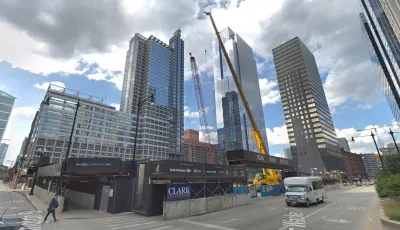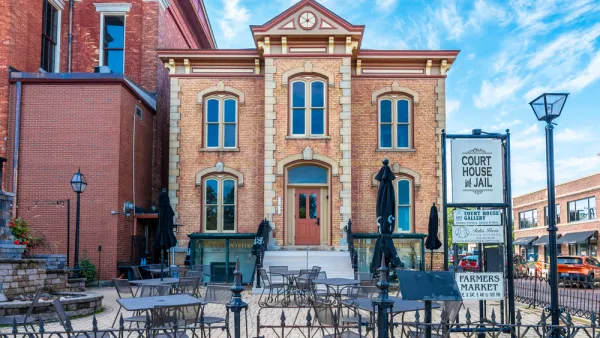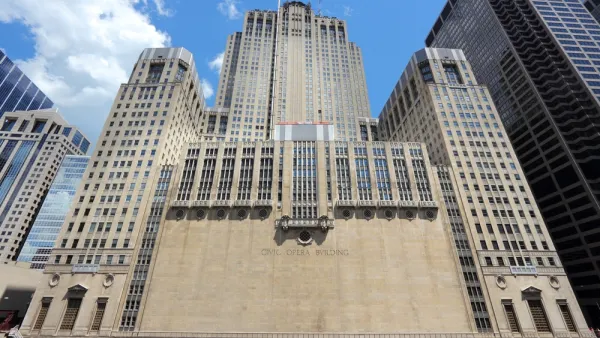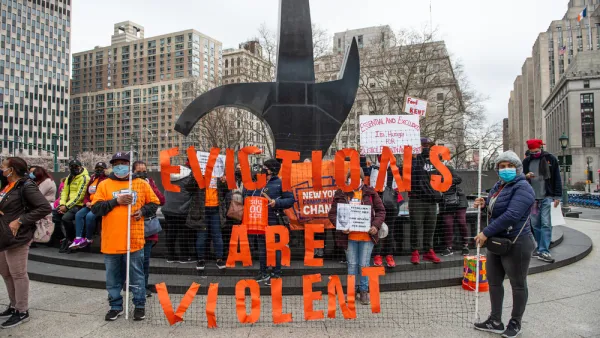A riverfront revival was well underway in Chicago. Then the pandemic hit. How can a splashy new downtown commercial development expect to fare in Covid's world?

The Bank of America Tower recently opened on the Chicago riverfront as the tallest new office building in the city in 30 years by topping out at 816 feet.
With Chicago's central business district (CBD) getting hammered during the pandemic, Blair Kamin offers three reasons to pause and take notice of the new building.
For one, the Bank of America Tower "represents a strong sign of confidence" in the CBD despite its current travails. For another reason, the building will add a $25 million boost in property tax revenue to a city government that is, similar to the CBD, suffering the effects of the economic downturn caused by the pandemic.
Finally, "The modernist design, a mix of bold structural drama, attractive public spaces and reflective-glass banality, will leave its mark on downtown long after the COVID-19 pandemic has passed," writes Kamin.
The new building is located on a site described by Kamin as high profile and transit oriented at 110 N. Wacker Drive. Prominently, the new building is the latest sign of how the Chicago River has become a focal point of civic and commercial life.
"Skyscrapers, like the neighboring Civic Opera Building at 20 N. Wacker, once turned their back on the polluted river. No more," writes Kamin.
A key question about the building's success still looms, however, given the current state of the economy and the large numbers of office workers staying home during the pandemic—whether by choice or by necessity of unemployment. The building's lead tenant, Bank of America, was expecting more than 2,000 employees to be working in the building. Currently, only 200 employees are reporting to the office.
FULL STORY: City’s tallest office building in 30 years opens along Chicago River, mixing drama and banality

National Parks Layoffs Will Cause Communities to Lose Billions
Thousands of essential park workers were laid off this week, just before the busy spring break season.

Retro-silient?: America’s First “Eco-burb,” The Woodlands Turns 50
A master-planned community north of Houston offers lessons on green infrastructure and resilient design, but falls short of its founder’s lofty affordability and walkability goals.

Delivering for America Plan Will Downgrade Mail Service in at Least 49.5 Percent of Zip Codes
Republican and Democrat lawmakers criticize the plan for its disproportionate negative impact on rural communities.

Test News Post 1
This is a summary

Test News Headline 46
Test for the image on the front page.

Balancing Bombs and Butterflies: How the National Guard Protects a Rare Species
The National Guard at Fort Indiantown Gap uses GIS technology and land management strategies to balance military training with conservation efforts, ensuring the survival of the rare eastern regal fritillary butterfly.
Urban Design for Planners 1: Software Tools
This six-course series explores essential urban design concepts using open source software and equips planners with the tools they need to participate fully in the urban design process.
Planning for Universal Design
Learn the tools for implementing Universal Design in planning regulations.
EMC Planning Group, Inc.
Planetizen
Planetizen
Mpact (formerly Rail~Volution)
Great Falls Development Authority, Inc.
HUDs Office of Policy Development and Research
NYU Wagner Graduate School of Public Service





























